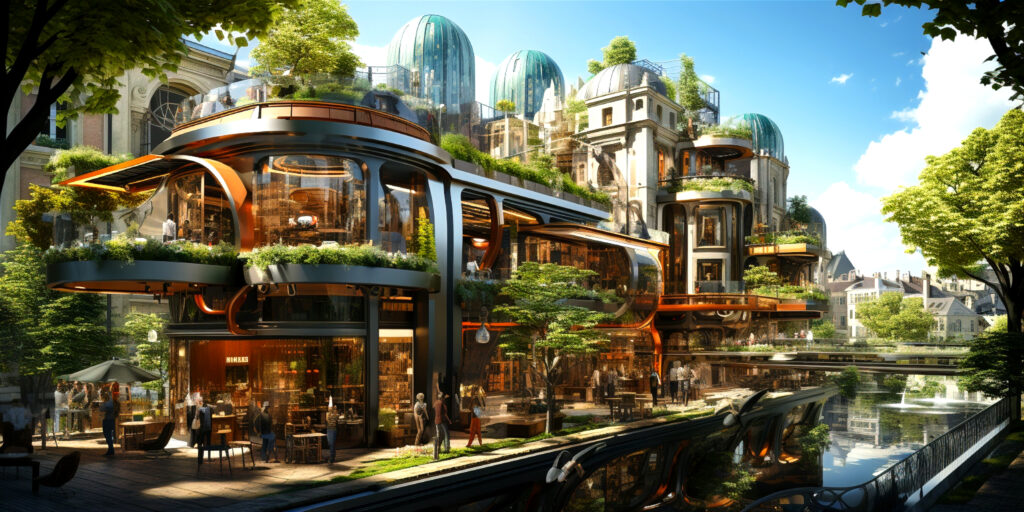Architizer’s Vision Awards are back! The global awards program honors the world’s best architectural concepts, ideas and imagery. Submit your work ahead of the Main Entry deadline on June 6th!
What style is it? Surprisingly, this is a forbidden question in architecture school. Although style has been a convenient way of classifying different architectural aesthetics and design approaches, it often leads to the simplification of complex concepts, rendering them into easily digestible visual elements.
In other words, reducing architecture to its “style” obscures the rich thought processes that occur during a project’s inception. Specifically, stylistic labels such as “modern,” “brutalist,” or “neo-classical” conceal traps in both how the public perceives architecture and how architects themselves approach the discipline.
How did the word “style” evolve as a classification tool? Architectural style is typically associated with a specific historical period or a geographical location. It is based on specific characteristics and features, methods of construction, form, scale and local traditions. However, the word “style” was not introduced to the architects’ vocabulary until after the 18th century.
Before the Enlightenment, the practice of architecture was considered almost divine and timeless, often associated with pure, natural form. When scholars began developing a new interpretation of history, dividing it into periods of growth, it enabled architectural historians to adopt a similar approach towards the discipline. This shift resulted in extensive debates regarding the “usefulness” of style classification. Many architects argued that this type of taxonomy could not adequately describe the concept and covert ideas present in the making of buildings. In fact, the past couple of decades, style labels have become even trickier to pin down, since architectural design is straying further away from specific morphological characteristics.
Barbican Lake Terrace by Kim Fyson, Barbican Lake Terrace – geograph.org.uk – 3525823, CC BY-SA 2.0
How many times has the Barbican, for instance, been criticized for its imposing presence and its rigid “Brutalist style?” Although it is a socially centric strategy, a statement for post-war renewal and urban design, as well as a highly innovative, community-focused proposal, the project has been somewhat controversial since its inception, which is partly attributed to its association with the Brutalist label.
In parallel, Le Corbusier’s Villa Savoye bears the tag of the “International Style” due to its clean lines, white façade, and ribbon windows. However, underneath this distinguishing form lies a deep commitment to functionalist ideas and a prioritization of human experience. Specifically, the house was designed according to Le Corbusier’s “Five Points of Architecture,” a manifesto outlining a set of principles considered the foundations of the modern architectural discipline.

MAXXI: Museum of XXI Century Arts by Zaha Hadid Architects, Rome, Italy
Another example is Zaha Hadid’s MAXXI Museum in Rome. While many focus on the dynamic curves and flowing forms, immediately celebrating them and tagging them as “parametric” or “neo-futuristic,” the MAXXI is more than an exercise in form. Specifically, walls serve as both structural elements and guiding lines for circulation, forming a unique spatial strategy that enables people to experience the museum. They create a continuous loop that invites visitors to actively explore the exhibitions, rather than passively observing them. Consequently, reducing the project to a mere stylistic label misses the way the design challenges conventional typologies, site integration, and the user’s spatial perception.
Today, “style” goes beyond simple classification. Many developers, media outlets, and even academics commodify “style” to sell, advertise, and critique buildings. Instagrammable designs thrive on social media spotlighting aesthetic appeal over intellectual rigor. The new AI tools push the tagging further, encouraging architects and designers to write prompts such as </imagine [floating house in the middle of the Atlantic designed in neo-gothic style]>. These new trends, albeit enticing, hide a very real trap, especially for the future generations of architects.
Stylistic mimicry may be particularly attractive to young professionals seeking to quickly gain recognition, secure commissions, and accelerate their professional growth. However, if all architects strive to fit under a specific design umbrella, there will be no architectural innovation. Additionally, this homogenization leaves no room for experimentation, cultural specificity, site responsiveness, or conceptual depth. Returning to architecture schools, the architect’s education capitalizes on these principles, urging students to draw from context, locality, and address contemporary urgencies, rather than committing to a specific form or construction method.
Finally, let’s not forget that it is the architects’ responsibility to shape the broader public perception. To be more specific, when people use “style” merely to identify and assess a building, they disengage entirely from any sort of architectural dialogue. Consequently, phrases such as “I don’t like it aesthetically” or “I want this specific style for my home” become part of a conversation that treats buildings as decorations rather than culture-shapers and functional catalysts for cities. This superficial engagement reduces architecture to a matter of taste instead of acknowledging its potential to actively address social, environmental and spatial challenges. By moving beyond the idea of “style,” architecture can be seen as an intellectual and civic practice — one that is shaped not by image, but by intention, context, and impact.
Architizer’s Vision Awards are back! The global awards program honors the world’s best architectural concepts, ideas and imagery. Submit your work ahead of the Main Entry deadline on June 6th!
Featured Image: Dennis Sylvester Hurd, ‘The Neighbourhood’ sci-fi borough by AI, CC0 1.0

